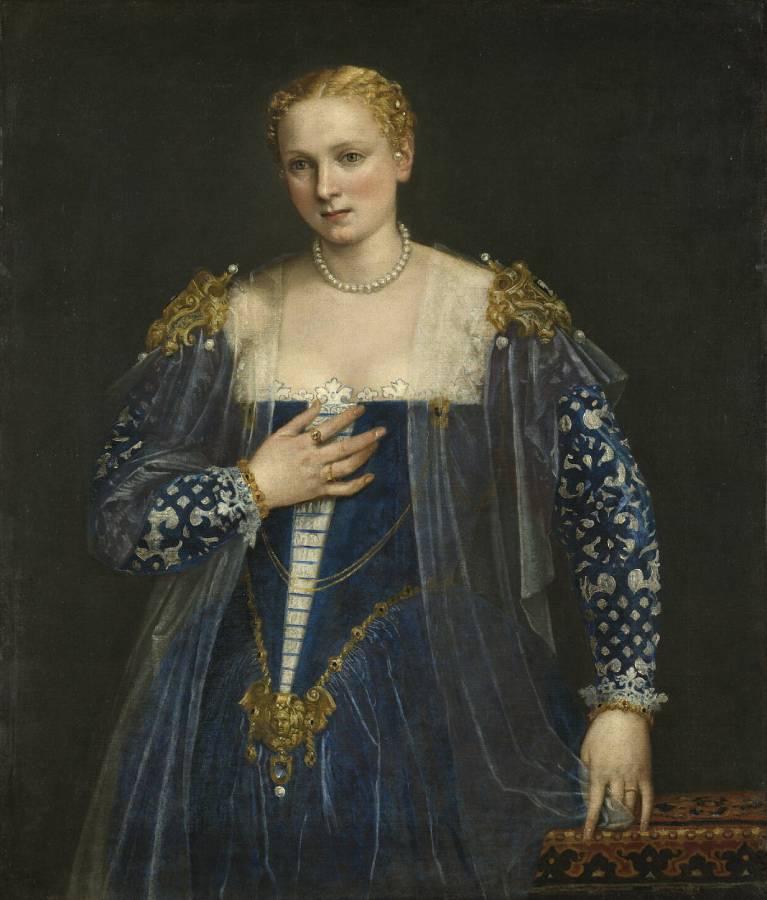Veronese, Paolo (1528-1588)
La Bella Nani (Portrait of a Venetian woman)
c.1560
Oil on canvas, 119 × 103 cm
Musée du Louvre, Paris
At the time of its rediscovery at the end of the 19th century, it was thought that this portrait had been commissioned by a patrician family from Venice, the Nani, which earned it the nickname “Beautiful Nani”. Due to lack of proof, historians have imagined that this young woman could also be a courtesan or the image of ideal beauty. In this monumental-sized effigy, Veronese uses a then very fashionable formula developed by his elder Titian, the greatest portraitist of the Venetian Renaissance: the model is faced, on a dark neutral background, and placed next to an element of furniture, here a table covered with a precious “Moretto-style” carpet, made in Anatolia. This sober staging exalts the beauty of the young woman as much as the richness of her clothing. Everything here reveals the portrait of a mother, from the aristocracy. The delicate white and pink complexion indicates that the lady is protecting herself from the sun. Her sparkling hair is Venetian blond, a color which was obtained, according to the beauty recipes of the time, by exposing one’s hair to the midday sun, on the roofs of Venetian palaces. Her ceremonial outfit consists of a large blue velvet dress, with a fairly wide opening on the chest, allowed for married ladies of the nobility and worn on the occasion of festivals. The sleeves are brocade with blue patterns on a white background, while a light white gauze coat is placed on her shoulders. Sumptuous pieces of jewelry magnify the ensemble: shoulder pads, belt, bracelets, necklace and rings of gold, pearl, sapphire and ruby. This lady of quality chastely turns her gaze away from that of the viewer. Her left hand, the ring finger of which is decorated with a wedding ring, elegantly holds the transparent veil of her garment, while her right hand rests on her heart, as a sign of marital fidelity. The portrait must thus signify the exemplary nature of this woman: her high social rank, her physical beauty and her moral virtue. (Louvre)
